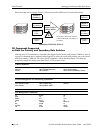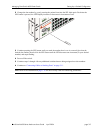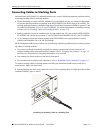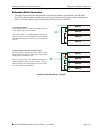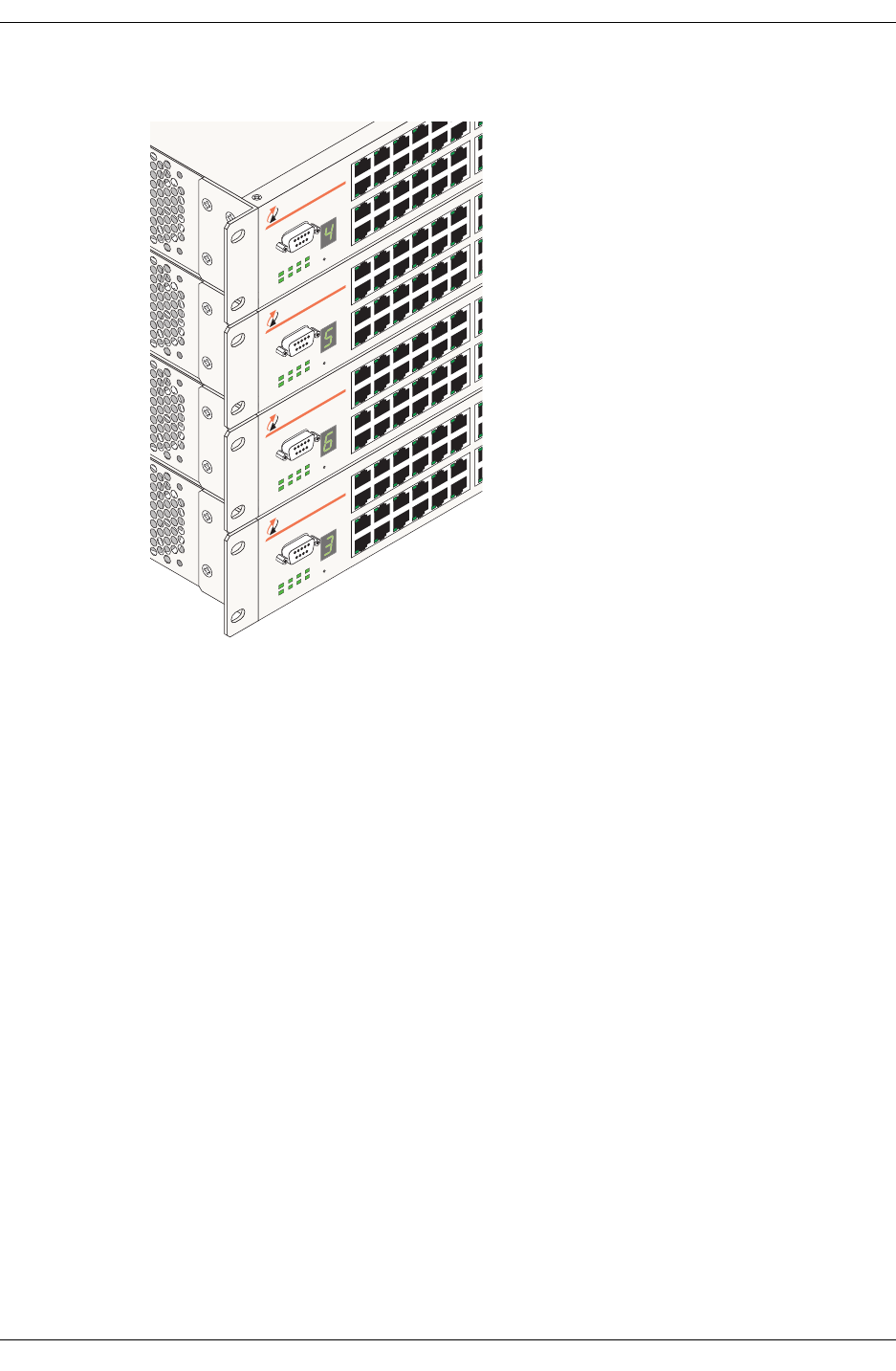
Setting Up a Stacked Configuration Managing OmniSwitch 6600 Series Stacks
page 3-10 OmniSwitch 6600 Series Hardware Users Guide April 2004
Slot Numbering Example
Stack of Four Switches with Unique Slot Numbers
3
4
5
6
7
8
9
10
11
1
2
1
2
TM
O
mniSwitch 66
24
O
K
1
O
K
2
P
S
1
P
S
2
P
R
I
S
E
C
T
E
M
P
F
A
N
27
28
29
30
31
32
33
34
35
36
2
5
2
6
C
O
N
S
O
L
E
S
E
L
3
4
5
6
7
8
9
1
0
1
1
1
2
1
2
TM
O
mniSwitch 66
24
O
K
1
O
K
2
P
S
1
P
S
2
P
R
I
S
E
C
T
E
M
P
F
A
N
27
28
29
30
31
3
2
33
34
3
5
36
2
5
26
C
O
N
S
O
L
E
S
E
L
3
4
5
6
7
8
9
10
11
1
2
1
2
TM
Om
niSwitch 66
24
O
K
1
O
K
2
P
S
1
P
S
2
P
R
I
S
E
C
T
E
M
P
F
A
N
2
7
28
2
9
30
31
32
3
3
34
35
3
6
25
2
6
C
O
N
S
O
L
E
S
E
L
3
4
5
6
7
8
9
10
11
12
1
2
TM
O
mniSwitch 6624
O
K
1
O
K
2
P
S
1
P
S
2
P
R
I
S
E
C
T
E
M
P
F
A
N
27
28
29
30
31
32 34 3
6
25
2
6
C
O
N
S
O
L
E
S
E
L
Valid Slot Assignments.
The illustration at left (showing a stacked
configuration with four switches) shows one
of many valid slot numbering possibilities.
• Although the slot numbers are not
sequential (4, 5, 6, and 3), all switches in
the stack have a unique slot number.
• The top switch in the stack does not
have to be designated as slot 1; for this
example, the top switch has been desig-
nated slot number 4.
• Because it has the lowest user-
assigned slot number, switch number 3
will be given the stack’s primary
management role in this example. Switch
number 4 will be given the secondary
role. Switches 5 and 6 will be given idle
status.







